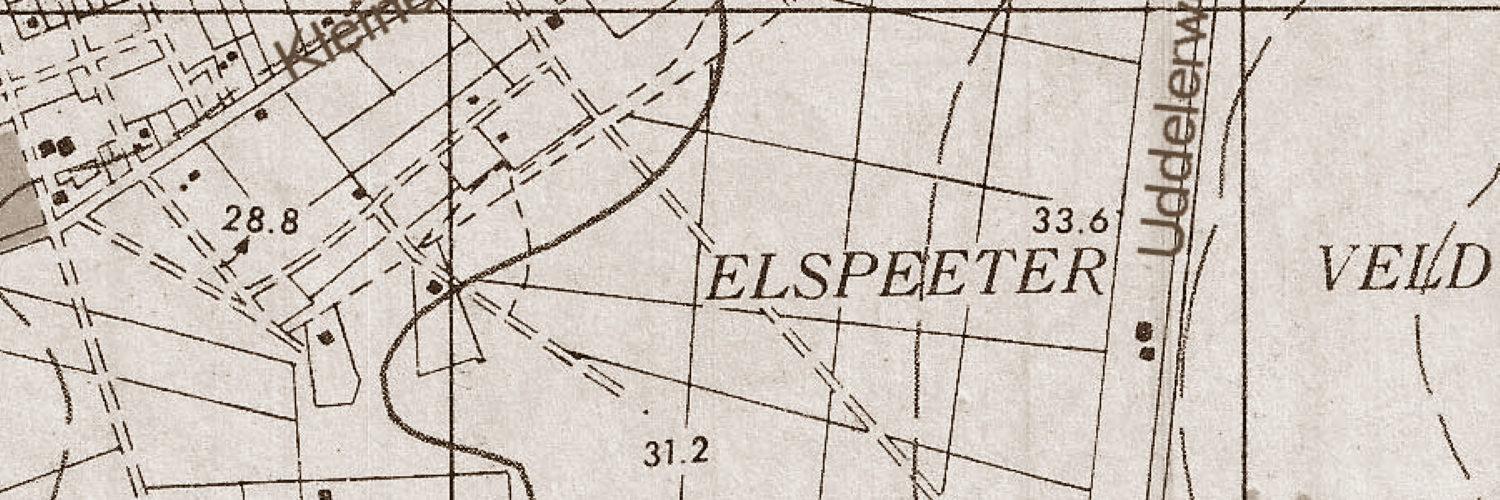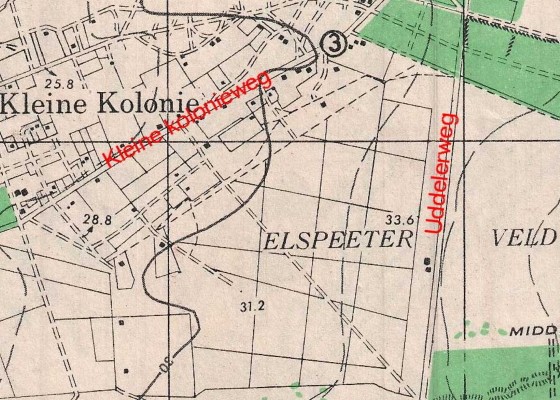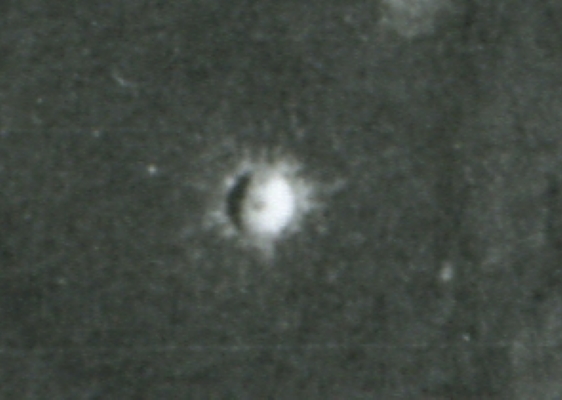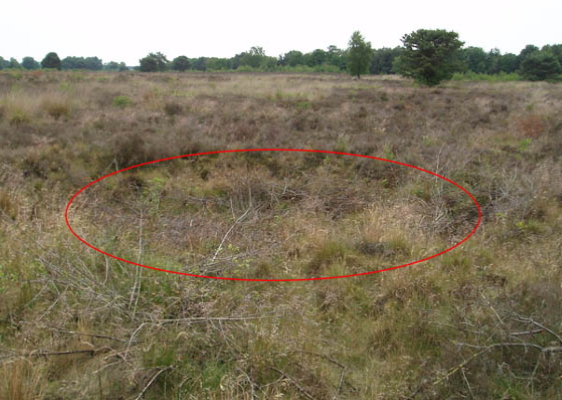The Elspeter heath
Many people will know that during the Second World War an airfield was under construction between Elspeet and Uddel. But more happened here. For example, there are lines visible that indicate that the Germans had the heath ploughed to prevent plane landings, and there is still a crater visible where a large bomb hit.
Airfield location
In 1935, there was already talk about 3 locations within the municipality that were suitable as an airfield. In a newspaper of 7 December 1935 it was stated: “Mr. Verschoor has read that the Municipality of Apeldoorn is going to build an airport with the help of unemployed people and government support. Is there no work object in that direction for the Municipality of Ermelo as well? The chairman will look into it. In our Municipality there are three areas designated for an airport: near the cycle path to Stakenberg between Elspeet and Uddel and in Ermelo in the heath, towards Groevenbeek, between the road and the railway line. More needs to be done on one area than on the other.”
Ploughing
On aerial photographs and topographic maps from the Second World War, a pattern of lines crossing each other ‘perpendicularly’, which form almost square areas, is visible on the Elspeetse Heide. These ‘plough furrows’ were not only made on the Elspeetse Heide between Elspeet and Uddel.
In a war diary from 1941, Tuesday 4 March, it says: “All heathlands on the Veluwe must be ploughed to prevent enemy aircraft from landing as much as possible. For example, a neighbouring farmer between Vierhouten and Elspeet must plough a furrow every 200 metres through a heathland of 800 ha (idea of a checkerboard).” The quote comes from the war diary of Wim van Houtum. He was the son of a paper manufacturer in Ughelen (near Apeldoorn) and was nineteen when the war broke out. Van Houtum kept meticulous daily notes of the war operations and also kept newspaper articles and pamphlets in scrapbooks. The diary covers four thousand pages of handwritten text, divided over four books, and is a unique document. The diary fragment suggests that the Germans simply ordered a farmer to plough the heath.
These patterns are still visible on modern aerial photographs. Strangely enough, some old topographic maps do show the anti-landing strips on Elspeetse Heide but not on Vierhouterheide, even though the same stripes are also shown there. Why? Because there was increased activity on Elspeetse Heide?
Bomb crater
A bomb also fell on the heath. As far as is known, it fell on a Sunday morning around 6:00. Why this bomb fell and whether this was a deliberate action is not known. However, we can still recognize the traces from then and now in the field. At that time, the bomb created a crater of over 7.5 meters in diameter, and the crater is still more than 1 meter deep. Since the bomb fell between 200 and 300 meters from the existing buildings, this must have been a terrible blow to the residents, who were most likely still in bed around that time on Sunday morning.
Bombardment
On the Uddelerweg between Elspeet and Uddel, an airfield was built by order of the Germans. A large number of workers had been deployed for this purpose as part of the labour deployment, who were housed in the Mennonite Brotherhood House. An airfield was of course a target for Allied fighters. Around 13:15, four to six American fighters appeared above the heath. These were probably the same planes that would later that afternoon shoot at Geurt de Zwaan’s truck in Nunspeet.
It was just break time and the workers were eating in a shack. This caused a large number of casualties during the attack. Eight workers were killed. Doctor H. Th. van de Poll and a few nurses provided assistance to the wounded. There were also eight of them. In the meantime, the planes continued to circle above the airfield. That is why the Elspeet police officers, chief sergeant Schaapman and sergeant Drenth stopped passing cars to take the wounded to hospitals in Apeldoorn and Ermelo as quickly as possible.
The names of the wounded were given by the company manager, Gijsbertus Versluis from Loosdrecht. The dead were taken to the General Cemetery in Elspeet and, after permission from the Public Prosecutor in Zutphen, to their own places of residence in Utrecht and Hilversum. Identification was not difficult, because everyone had their identity card in their pocket. Five came from Utrecht and three from Hilversum.
The youngest was 32 years old, the oldest 62. From Utrecht came: Jan Pieter Gerard Elsing (32 years old), Cornelis van Ewijk (36 years old), Jan Gerritsen (35 years old), Hendrikus van Hasselt (62 years old) and Cornelis Wijje (48 years old). The inhabitants of Hilversum were: Johan Lammertse (39 years old), Willem Elias van der Vaarst (41 years old) and Albertus Arnoldus Wouters (35 years old). The other workers at the airport had had enough and left, a number of them asked for shelter with the police in Harderwijk.
No camp for Jews
When the heathland has been mowed, the contours of the runways are still clearly visible. This heathland had the code name “FOX” with the Allies. This was not used during WWII. According to plans, a reception camp for Jews was to be built on the left. These plans were stopped by Queen Wilhelmina. This camp was then built in Drenthe, namely Camp Westerbork.
Further construction of the airport was stopped shortly afterwards.




